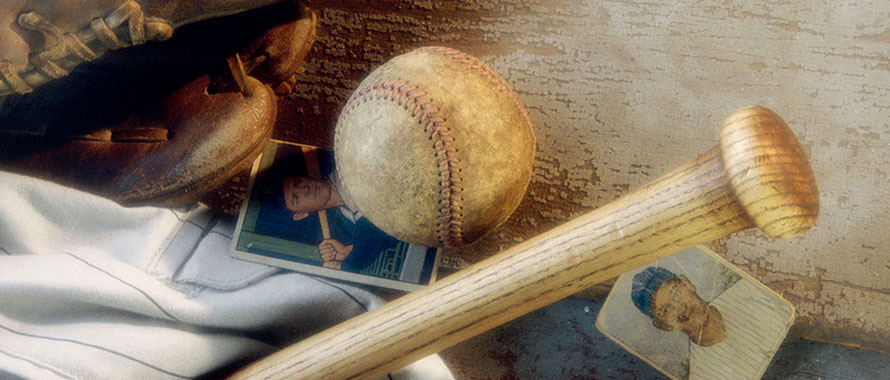A mint-condition Mickey Mantle baseball card from 1952 sold at auction Aug. 28 for $12.6 million, making it the most valuable sports collectible in the world, CNN recently reported. According to a news release from Heritage Auctions, the exceptionally well-preserved card was last purchased in 1991 for $50,000, a price that broke records at the time. The new eight-figure sale was “the stuff of fantasy just a decade ago,” a director at the auction house said in the news release.
Featured Solutions
“The CNN article says it was a ‘jaw-dropping’ amount, and I would agree,” said Daniel Verdun, Senior Underwriter, Personal Insurance, Burns & Wilcox, Parsippany, New Jersey. “It is an incredible amount of money that was paid to purchase this baseball card. We are talking about an iconic New York Yankee playing for the biggest baseball franchise in MLB, a Hall-of-Famer who won multiple World Series and broke multiple records. All of that certainly helped in the value of this card.”

It is an incredible amount of money that was paid to purchase this baseball card. We are talking about an iconic New York Yankee playing for the biggest baseball franchise in MLB, a Hall-of-Famer who won multiple World Series and broke multiple records.
The Mickey Mantle card is one of just a “handful” in near-perfect condition, USA Today reported, and its historic sale appears to reflect today’s booming market for sports memorabilia. Like all high-value collectibles, these items should always be protected by a Personal Articles Floater, which can be tailored to cover everything from time in transit to losses in value.
“Right now, sports memorabilia, or any type of niche collectible items, are being purchased more than ever before,” said Sarah Chandonnet, Manager, Private Client, Burns & Wilcox, Detroit/Farmington Hills, Michigan. “Clients are paying top-dollar on these items which serve as an alternative investment.”
More collectors investing in sports memorabilia, other niche items
The sports card market has been doing notably well since about 2015-16 and reached a peak in 2020-21, when COVID-19 put it into “overdrive,” The Atlantic reported in July. Today, market corrections mean some cards have declined somewhat in value, but the market remains strong, sources told the outlet. Verdun has seen this trend in action, with investors viewing the sports memorabilia industry as one with a potential for high returns.
“There is certainly a big uptick in sports memorabilia in today’s market, and collectors are taking advantage of that. They are making these types of purchases, preserving the card, and at some point, when they feel it is the right time, they are making the sale,” he said. “This is a good market for that right now.”

Clients are paying top-dollar on [niche collectible items] which serve as an alternative investment.
That was also the case in Canada as of last summer, when demand for sports cards and Pokémon cards was skyrocketing, CBC News reported. As new and younger investors enter the market, niche memorabilia like sports items, footwear or designer bags are rivaling the more traditional choice of fine art, Chandonnet has observed. “Clients are finding a niche market and really investing in it,” she said. “It is fascinating, and it is keeping the space of collecting really interesting right now.”
These trends are likely to continue, along with more record-breaking sales, Chandonnet said. “As wealth continues to climb, I think clients are just going to purchase bigger items more often,” she said. “I think this is just going to be a continuous trend moving forward.”
Fans who grew up cheering for a team may also see an opportunity to enter the market once they have disposable income, contributing to the increase in collectors, sources told Fox Business in April. Anyone who is new to collecting, however, should plan ahead for how they will protect their purchase. If the high-value collectible is stored at home and disaster strikes, collectors could have nothing to show for their investment if they do not have the right insurance policy. A Personal Articles Floater, also known as Personal Inland Marine Insurance, is a policy for collectibles that can cover theft, fire, water damage, and other types of loss.
“That is the type of policy that a collector or someone making this type of purchase would want to obtain,” Verdun said.
Homeowners Insurance endorsements not enough for most collectors
The standalone coverage offered by a Personal Articles Floater is crucial for collectors since Homeowners Insurance will not typically extend to collections, and endorsements on Homeowners Insurance are not usually sufficient. “When you are purchasing a high-value item that is noteworthy, you are going to want a specific insurance policy that adequately covers your investment,” Chandonnet emphasized. “This should include items in transit coverage when possible, which is important when a collectible is being shipped or in any type of transit.”
“You also want worldwide coverage for the item, if possible,” she said. “A Personal Articles Floater can give you the bells and whistles coverages that these clients really need. If my baseball card is stored in a warehouse- do I still have coverage? If the item depreciates- will my insurance policy adequately protect and cover my investment?

When you are purchasing a high-value item that is noteworthy, you are going to want a specific insurance policy that covers everything.
These are important questions to ask, she said. When purchasing this type of policy, look closely at the terms, conditions and exclusions, Verdun added. “Each policy will have its own terms based on the risk that the insurance company receives,” he said. For instance, depending on where the card or other valuable item will be stored, the insurance carrier may require the installation of security cameras or other safety features in the home or that the item will be kept in a safe.
“The policy could have a named-location-only endorsement, meaning the item is only insured at the location address of the policy,” he noted. “They may also have a mysterious disappearance exclusion, meaning that if it mysteriously disappears and the insured has no idea where it went, there is no coverage.”
A breakage endorsement is also possible, Chandonnet said. Collectible Items should be stored properly, in a glass encasement when needed and away from water sources, and detailed schedules of all items should be kept and updated regularly.
“A professional appraiser should be hired so you know the item’s value and can have it documented. Clients should make sure they are staying up on what the item is worth and cataloging it appropriately,” she said. “With collectors, this is often their hobby. It is so important that they take protective measures to make sure what they collect is safe and stored appropriately.”

It is a very active and booming market right now. Collectors need to do their homework when it comes to purchasing these policies.
Given that many collectors are “looking down the future at the rate of return on the investment,” Verdun said, “anyone who has a collection” should consider a Personal Articles Floater.
“It is a very active and booming market right now,” he said. “Collectors really need to really do their homework when it comes to purchasing these policies.”
Collector’s location could determine coverage needs
Depending on the region where a collector resides, policyholders may need certain additions to their Personal Articles Floater, such as specific wildfire or wind coverage. In May, the Washington Post reported that 1 in 6 Americans live in areas with “significant wildfire risk,” and that the number will grow to 21% within the next 30 years. Severe weather is also affecting more and more homeowners, with a Gallup poll released in April showing that 1 in 3 Americans has been personally affected by extreme weather in the past two years, the New York Times reported. Canada is also expected to see more fires, floods and other extreme weather due to climate change, CBC News reported last year.
“A separate wind and hurricane deductible may apply in certain areas, like Florida, or out West, there may be a wildfire deductible, or they may exclude wildfire altogether,” Verdun said.
If items are being stored in an area that is at higher risk for severe weather, “you want to make sure your investment is stored in a well-rated facility,” Chandonnet said. “It is really important that you have those preventive steps in place.”
In addition to taking safety measures to protect their collections like installing a home security system or a safe, homeowners should also take steps to avoid unnecessary exposure on social media, as their online presence could provide clues to would-be criminals. They should avoid posting details about their high-value purchases or where they are stored, for example.
“Avoid all media as much as possible,” Verdun suggested.
Chandonnet agreed, urging clients to be cautious. “When our clients make investments and purchases, social media is an aspect to review on our end and it affects the underwriting process,” she said. “We want to ensure we are writing coverage for well-managed individuals, meaning they are not blasting their pictures on social media. The meticulously maintained, well-managed individual is the ideal client for everyone.”
All things considered, Chandonnet said, it is an exciting time to be in the collections industry as sports memorabilia and other niche markets boom. “This is the hot new trend,” she said. “It is an exciting time to purchase collectibles, and an exciting time to insure them, too. There is never a slow or boring day.”





